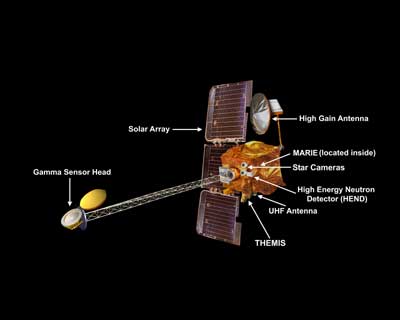|
|
 |
| Slideshows |
 |
Slideshow: 01
2001 Mars Odyssey Slides |

|
<< prev
|
01 ·
02 ·
03 ·
04 ·
05 ·
06 ·
07 ·
08 ·
09 ·
10
11 ·
12 ·
13 ·
14 ·
15 ·
16 ·
17 ·
18 ·
19 ·
20
|
next >>
|
|
3) Odyssey Configuration: The Odyssey orbiter is
composed mostly of aluminum and titanium, similar to materials
used in the construction of high-performance airplanes. Most
systems on the spacecraft are duplicated so that the spacecraft
has many onboard backup systems to rely on. The solar array
powers the spacecraft, as well as stores energy in the battery
for use when the spacecraft is behind Mars and sunlight is
blocked. Odyssey has three science instruments that will study
the Martian environment: the Thermal Emission Imaging System
(THEMIS), the Gamma Ray Spectrometer (GRS), and the Martian
Radiation Environment Experiment (MARIE). |
|